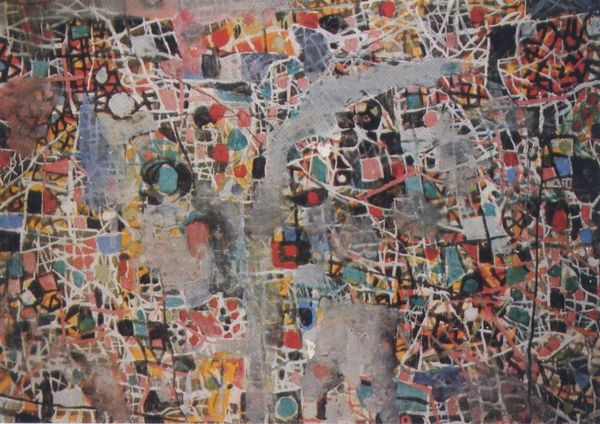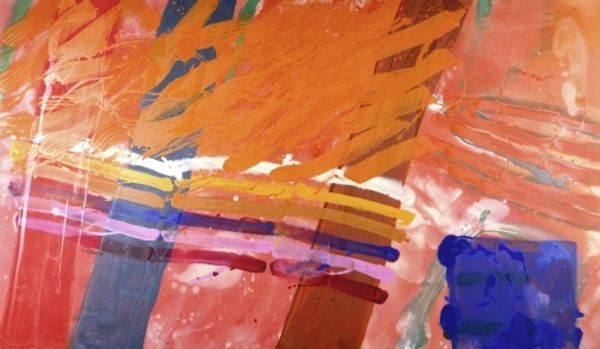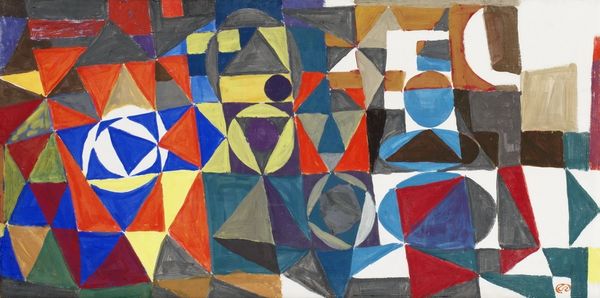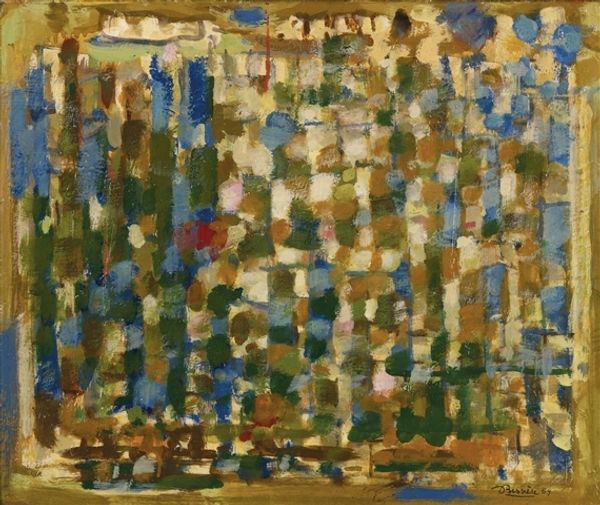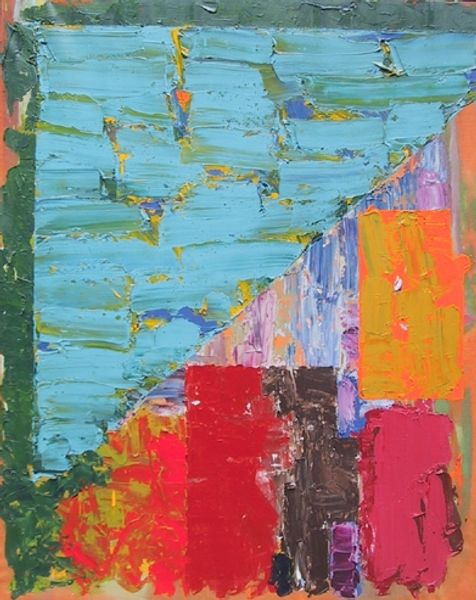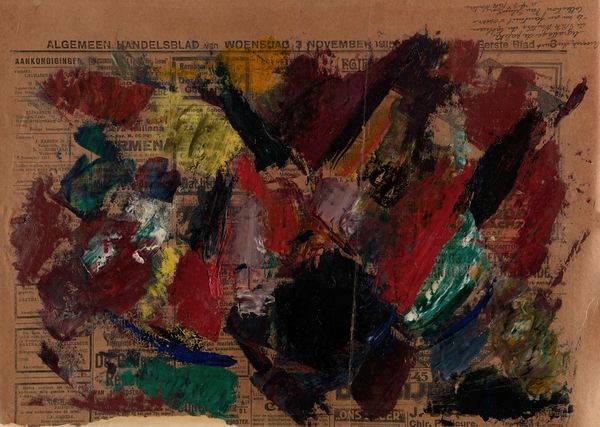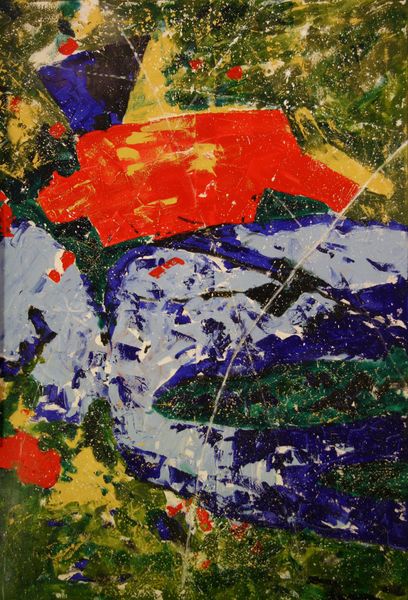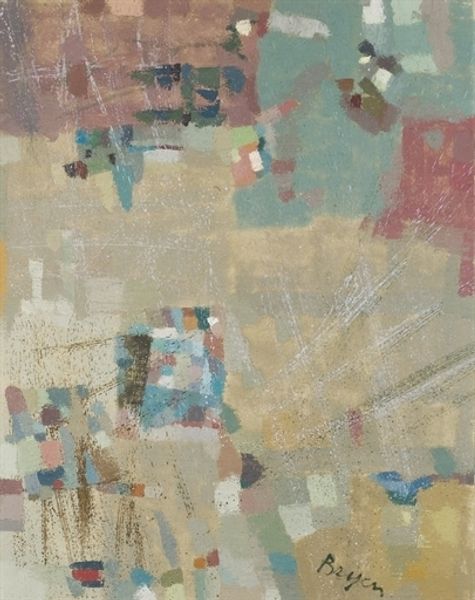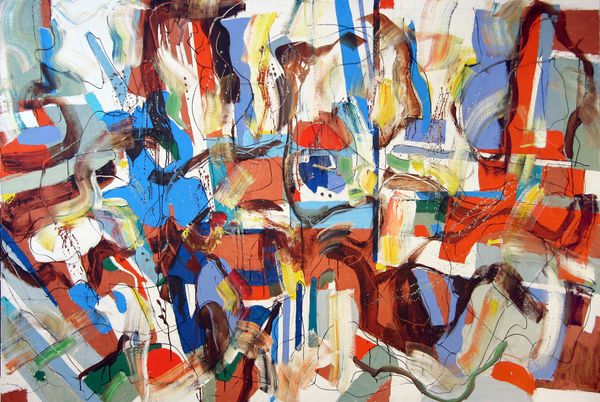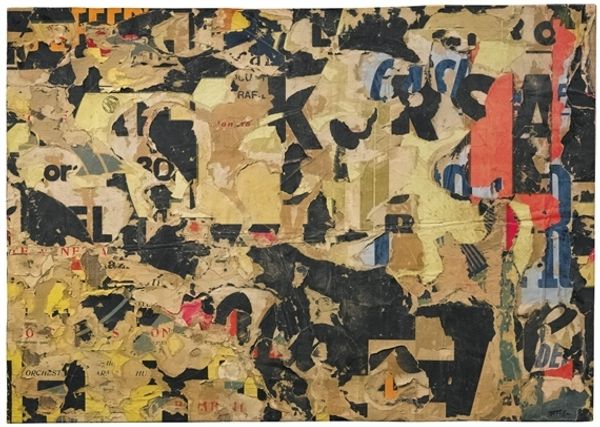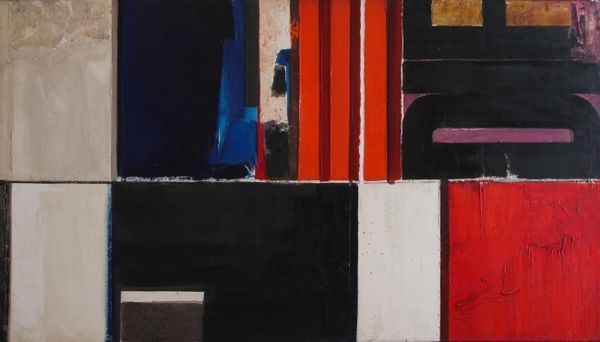
painting, watercolor
#
abstract expressionism
#
painting
#
impressionism
#
asian-art
#
oil painting
#
watercolor
#
geometric
#
abstraction
Copyright: Vicente Manansala,Fair Use
Editor: Here we have Vicente Manansala’s “Untitled” painting, composed of oil and watercolor. At first glance, I'm struck by the way it’s almost fragmented, like looking through broken glass. What do you see in this piece? Curator: I see a powerful commentary on the fragmented nature of identity in a post-colonial context. Manansala, as a Filipino artist, was working in a time of immense social and political upheaval. The segmented composition – the way the image is broken up into these almost shattered planes – could represent the disruptions caused by colonization and the struggle to reconstruct a cohesive cultural identity. Do you see any potential echoes of indigenous Filipino art forms in the geometric patterns and bold color choices? Editor: I can see the geometric shapes, but I don’t know enough about Filipino art to connect it directly. I see abstract shapes like fruits or figures that suggest every day scenes, which feel reminiscent of impressionism. Curator: Absolutely. And that impressionistic feel isn’t accidental; it highlights a tension. On the one hand, there's this Western artistic influence, reflecting the art education he received, and on the other hand, he seems to be actively subverting it. He uses it, breaks it apart, to represent the complexities of his cultural reality, which is never just a simple imitation. Do you get a sense of how the colours play into that dialogue? Editor: Yes! The red feels really intense and immediate, and there are blues which feel subdued, like contrasting emotions. Curator: Precisely. The colours are not just aesthetic; they become symbolic of cultural and political forces at play. The tension you felt becomes embodied in those juxtapositions of colour and fragmented forms. Editor: That makes me rethink my first reaction – it’s not just pretty abstraction; it’s charged with history. Curator: Exactly! Art like this invites us to unpack those charges, and ask, what did a decolonized and self-aware visual vocabulary look like then, and what might it look like today?
Comments
No comments
Be the first to comment and join the conversation on the ultimate creative platform.
